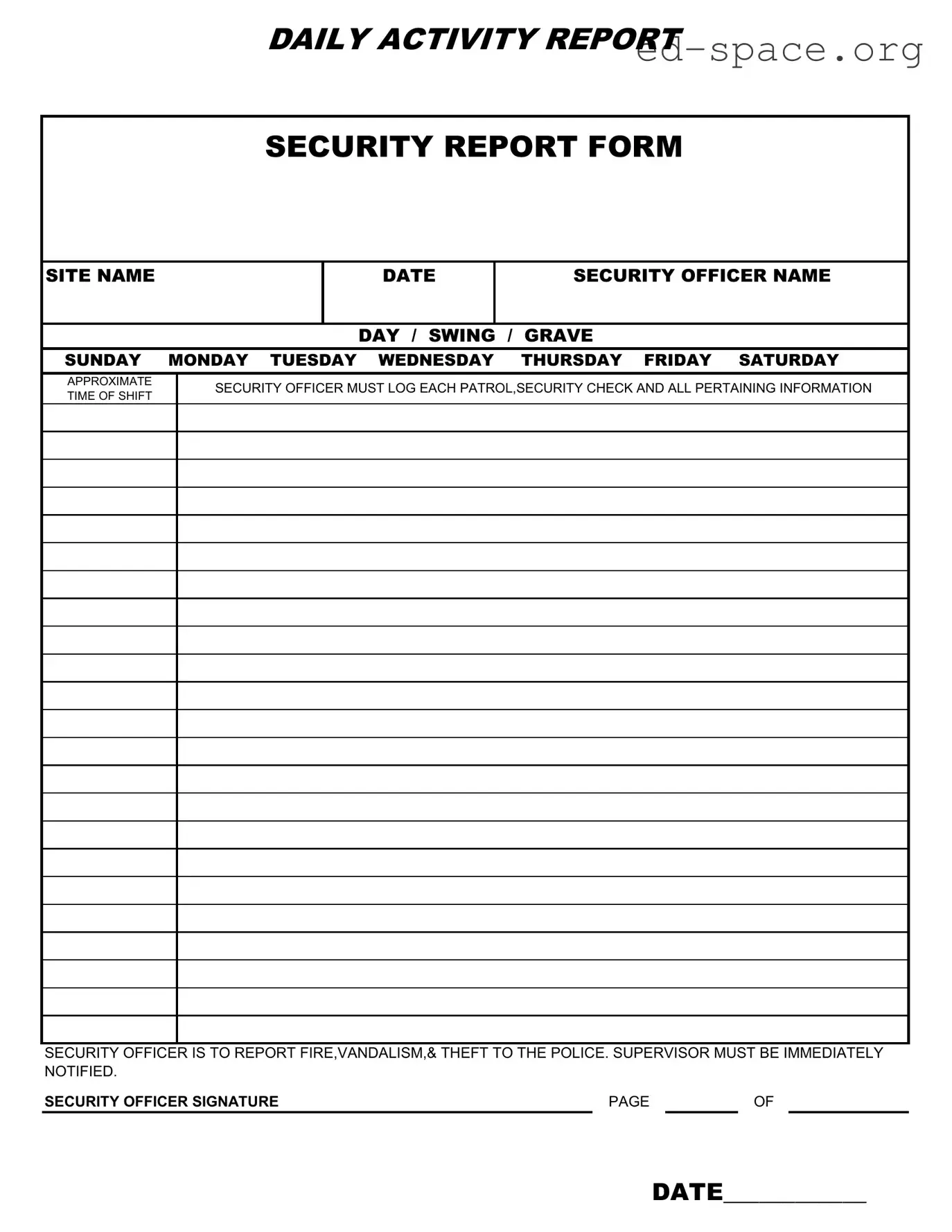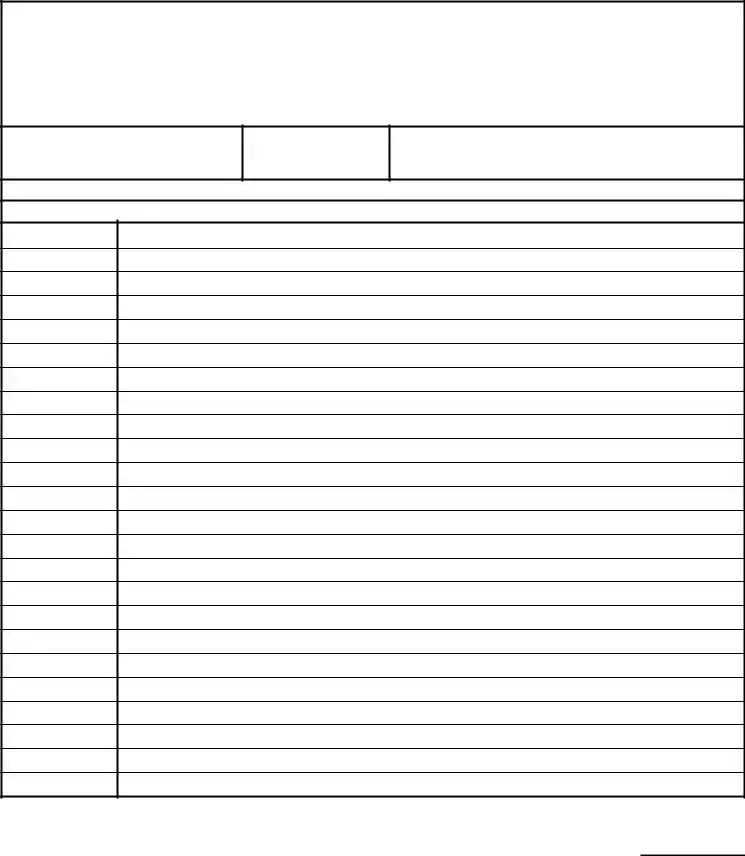What information is required on the Security Guard Daily Report Sample form?
The Security Guard Daily Report Sample form requires several key pieces of information to be filled out by the security officer. These include the site's name where the security detail is stationed, the date of the report, the name of the security officer, and a designation of the officer's shift (day, swing, or grave). The form specifies that the officer must log each patrol, security check, and all pertinent information related to their duties. Additionally, it mandates the reporting of any fire, vandalism, or theft to the police and immediate notification of a supervisor. The form concludes with a space for the security officer's signature and a field to indicate the page number and date again for record-keeping purposes.
Why is it important for security officers to log each patrol and security check?
Logging each patrol and security check is crucial for several reasons. It creates a detailed record of the security officer's activities during their shift, which can be vital in incident investigations. This documentation helps to establish a timeline of events, verify the officer's presence at specific locations, and ensure accountability. It also assists in identifying patterns or recurring security concerns that may require additional measures or attention. Furthermore, these logs serve as a communication tool between officers across shifts, enhancing the overall security strategy and response effectiveness.
What should a security officer do if they report fire, vandalism, or theft?
Upon encountering fire, vandalism, or theft, a security officer should first report the incident to the police to ensure the appropriate authorities are engaged in handling the situation. Following this, it is imperative for the officer to immediately notify their supervisor of the incident. This notification process is crucial for escalating the issue to higher management levels, allowing for a coordinated and comprehensive response. Additionally, documenting the incident in the daily report is necessary to provide a written account of the events, which could be crucial for insurance claims, legal actions, or further investigations.
How should the "approximate time of shift" be recorded in the form?
In the "approximate time of shift" section, security officers are expected to note the start and end times of their shift. This notation should include any breaks or deviations from the scheduled hours. By recording this information, it ensures a clear understanding of the officer's working hours, covered periods of surveillance, and any potential gaps in security coverage. Accurate timekeeping is essential for payroll purposes, assessing staffing needs, and verifying the security coverage in case of any incidents requiring further scrutiny.
Why is the supervisor's immediate notification important in case of incidents?
Immediate notification of a supervisor in the event of incidents such as fire, vandalism, or theft is crucial for several reasons. Firstly, it ensures that upper management is quickly informed about security breaches or emergencies, allowing for a swift and coordinated response. Supervisors can initiate further action, mobilize additional resources, or contact emergency services if needed. This rapid communication helps in containing and managing the situation effectively, minimizing potential harm or loss. Additionally, supervisors can provide guidance or instructions to the security officer on the scene, ensuring appropriate measures are taken. Immediate notification also facilitates the documentation and review process, ensuring all details are accurately captured for future reference or action.

